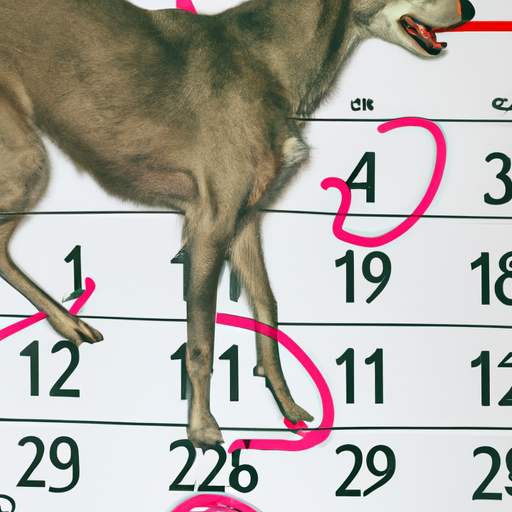Understanding Your Female Dog’s Reproduction Cycle
Understanding your female dog’s reproductive cycle is crucial in managing her fertility and ensuring her overall health. As a conscientious caregiver, it’s important to be aware of the four stages of your dog’s estrous cycle:
- Proestrus: The beginning of the cycle, where your dog might show changes in behavior and physical signs, such as a swollen vulva or bleeding. This stage usually lasts 7-10 days.
- Estrus: The fertile stage where your dog is receptive to males and can get pregnant. This stage typically lasts 5-9 days.
- Diestrus: The period after mating. If your dog is pregnant, this stage lasts for about two months. If not pregnant, it can last up to 3 months.
- Anestrus: The resting stage. This period can last anywhere between 2-8 months.
It’s during the second stage, estrus, that your female dog is most fertile and can become pregnant.
Recognizing the Signs of Fertility
Being able to recognize the signs of fertility is essential for planning or preventing pregnancies. Look for the following signs:
- A swollen vulva
- Vaginal bleeding or discharge
- Increased urination
- Changes in behavior, such as flirting or flagging
| Signs | Description |
|---|---|
| Swollen Vulva | This is often the first sign of the cycle |
| Vaginal Bleeding | This can range from light pink to dark red |
| Increased Urination | This is to spread their scent to attract males |
| Behavioral Changes | Flirting or flagging (raising their tail when petted) |
Managing Your Dog’s Fertility
You’ve learned the basics of dog fertility, but how do you manage it? Here are a few options:
- Breeding: If you’re considering breeding your dog, consult with a vet to ensure your dog is healthy and ready for pregnancy.
- Spaying: If you’re not planning to breed your dog, consider spaying her. This will prevent unwanted pregnancies and eliminate her heat cycles.
- Birth Control: There are birth control options available for dogs, but they should only be used under the guidance of a vet.
Effects of Fertility on Behavior and Health
Your dog’s fertility cycle can affect more than just her ability to become pregnant. During her cycle, she may display changes in behavior due to hormonal fluctuations. This could include increased affection, restlessness, or aggression.
In terms of health, repeated heat cycles without pregnancy can increase the risk of certain diseases, such as mammary cancer or pyometra (a life-threatening uterine infection). Regular vet check-ups are crucial to monitor your dog’s health throughout her reproductive years.
FAQ
Q: How often does a dog go into heat?
A: Most dogs go into heat every six months, but it can vary depending on the breed and individual dog.
Q: Can I spay my dog while she’s in heat?
A: It’s generally safer to spay a dog between heat cycles, but it can be done during heat if necessary.
Q: How can I tell if my dog is pregnant?
A: Signs of pregnancy in dogs include increased appetite, weight gain, and changes in behavior. A vet can confirm pregnancy through a physical exam or ultrasound.
Q: Is there a test to determine if my dog is in heat?
A: Vets can perform tests to check for increased hormone levels, which can indicate if a dog is in heat. Home tests are also available but may be less reliable.
Remember, as a caregiver, the best thing you can do for your furry friend is to stay informed and proactive about her health.



